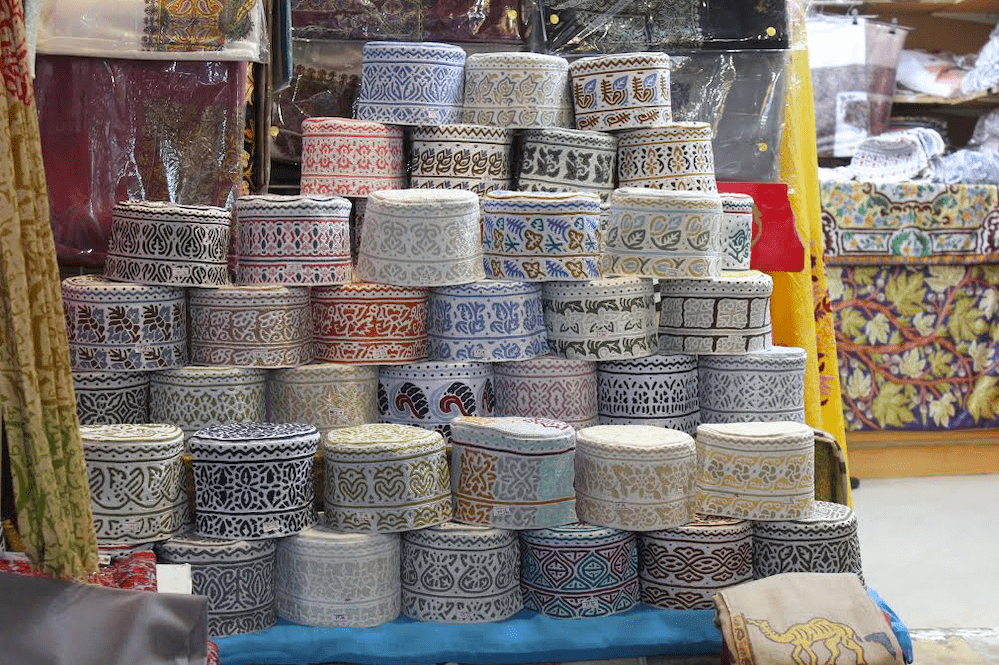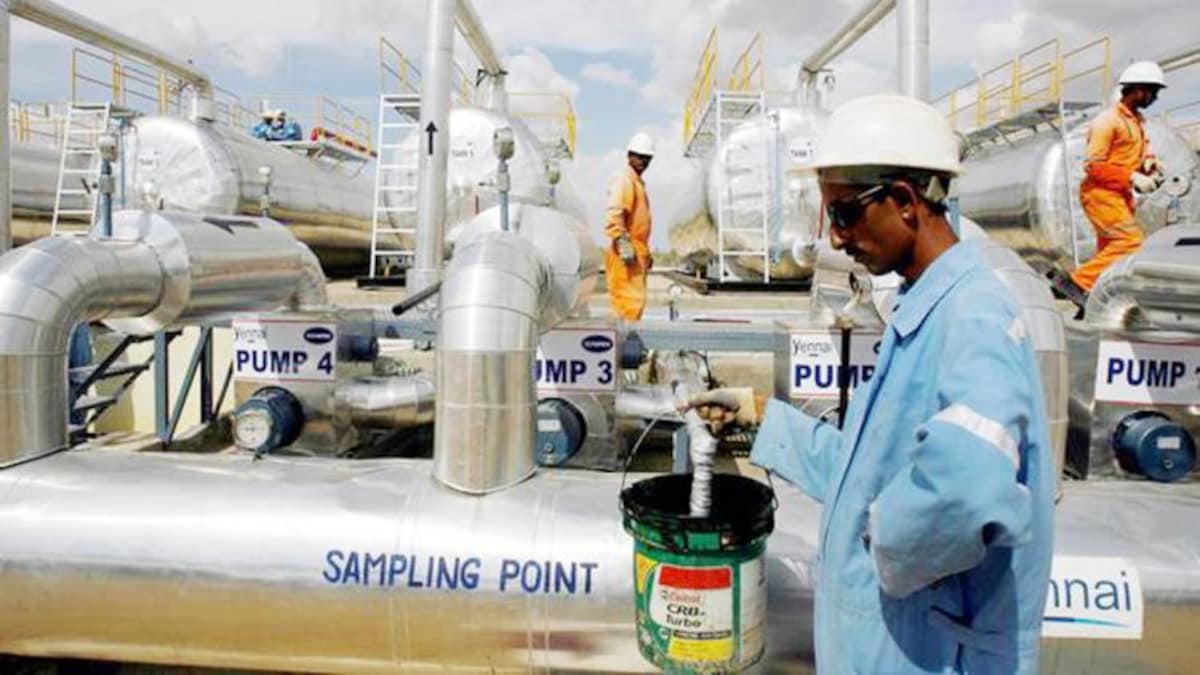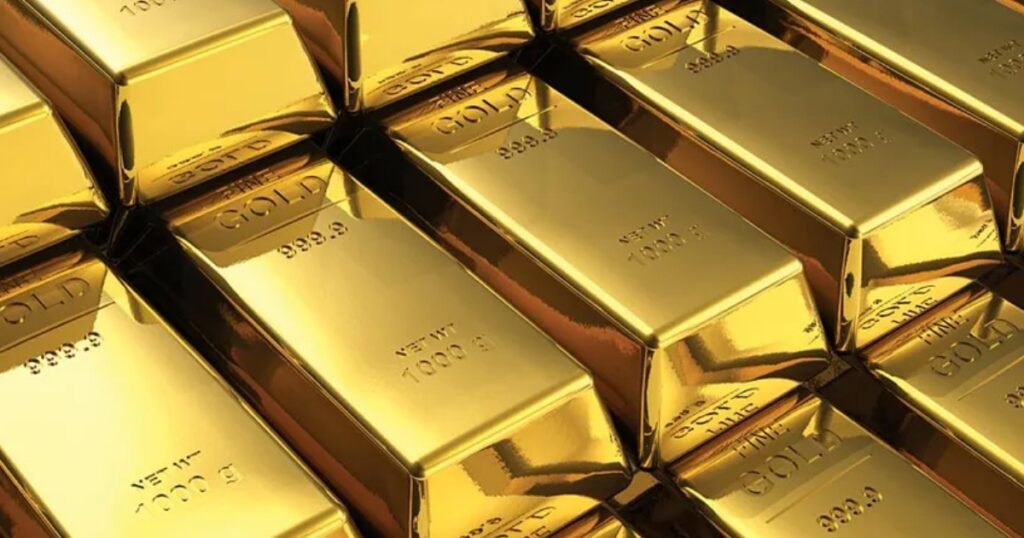The over 200-year old marketplace in Muscat is a veritable delight and wonder for all, like stepping inside the pages of a fairy tale from some bygone era.
In pre-Covid times tourists would flock in droves along the wide, sweeping arc of the picturesque Corniche waterfront, soaking in the balmy, bracing weather and the intoxicating ambience that settle around you like an invisible mantle. For the majority of tourists coming from the harsh, unfriendly and bitter, sub-zero climes of Europe, America and England, this is heaven. Indeed it is a stark contrast to mostly, grey, wet and bleak days. The all-pervading warmth in the atmosphere is not just because of the benign sunshine all around them. Perhaps it has more to do with the genuine warmth, love and hospitality of the Omani people. Amidst all this, the ebb and flow of life seems to flow at a gentle and leisurely pace. The gulls that skim over the white-capped waves in the harbour, add to the idyllic setting. And at the heart of all this is the Muttrah Souq with its irresistible and enchanting mystique. Don’t pinch yourself if you think you’re dreaming although the impulse to do just that is hard to resist even after several visits to the Muttrah Souq. it’s as real as real can be. .
Every place has its distinctive flavour and every city has a market that relates its stories, embraces its history and accompanies its evolution. If you enjoy visiting public markets, you must see Mutrah Souq, the most beautiful market your eyes will ever see!
Step inside the souk and the timeless, haunting mystery and charm of the place takes hold of you almost immediately. It’s difficult to shake off this feeling that somehow you’re walking through the pages of an Arabian Nights tale. What lends more weight to this feeling is the fact that the 200 year-old Muttrah Souq is regarded as the oldest souq in the Arab world.

This is Muscat at its most magical: an absorbing labyrinth of narrow, perfume-laden alleyways packed with colourful little shops selling frankincense and bukhoor (incense), old silver khanjars,Bedouin jewellery and other exotic paraphernalia, all under one roof. Moving around at first may seem daunting at first. And if the thought crosses your mind that you may get lost, don’t worry about it at all. The genuinely warm, friendly and helpful Omani people are always ready to come to anyone’s rescue without a moment’s hesitation.
The Arabic name for the souk is Al Dahlam, meaning ‘darkness’, sounds apt and befitting. Even during the day, there is a kind of all-pervading semi-darkness that makes it difficult to navigate the criss-cross maze of narrow, serpentine lanes inside the place. The name of the market has been drawn specifically from the part that extends from Al Lawatiya Mosque to Khour Bimba where the place is really full of stores and stalls and the narrow area of lanes does not allow the sunlight to enter. The market was a source of supply for Omanis where they can buy their needs in the 1960s when life requirements were simpler than today. Most of the goods were imported, in addition to local products like textiles, fruit, vegetables and dates.
One of the oldest market places in the Arab world, the Muttrah Souq is located adjacent to the Muscat harbour and has seen immense trade in the age of sail, being strategically located on the way to India and China.[3] It has been named after darkness because of the crowded stalls and lanes where the sunrays do not infiltrate during the day and the shoppers need lamps to know their destinations. The name of the market has been drawn specifically from the part that extends from Al Lawatiya Mosque to Khour Bimba where the place is really full of stores and stalls and the narrow area of lanes does not allow the sunlight to enter. The market was a source of supply for Omanis where they can buy their needs in the 1960s when life requirements were simpler than today. Most of the goods were imported, in addition to local products like textiles, fruit, vegetables and dates.
The main area of the souq carries mainly household goods, shoes and ready-made garments. As you move deeper inside the mixed aroma of frankincense, perfume oils, fresh jasmine, and spices hold you enthralled like a helpless captive. There are also tiny shops (on the side streets and alleyways leading up to the souq) with Omani silver, stalls of white dishdashas, embroidered kumahs, and multicoloured head scarves. Other items include Omani pots, paintings, hookah pipes, framed khanjars (daggers), leatherwork, and incense.
Even if you don’t buy anything, the souq is well worth a visit to absorb the ambience of another time. The prices for most items are negotiable and everyone enjoys the tug-of-war of some friendly bargaining. The place is best enjoyed when you take your time to soak in all the sights and sounds in a relaxed and unhurried manner.
The Arabic name for the souk is Al Dahlam, meaning ‘darkness’. Even during the day, there is a kind of all-pervading semi-darkness that makes it difficult to navigate the criss-cross maze of narrow, serpentine lanes inside the place.
Many people come to Mutrah Corniche just to visit the souq, which retains the chaotic interest of a traditional Arab market albeit housed under modern timber roofing. Shops selling Omani and Indian artefacts together with a few antiques jostle among more traditional textile, hardware and jewellery stores. Bargaining is expected although discounts tend to be small. Cards are generally accepted in most shops, but bring cash for better deals. The main entry is via the Corniche, opposite the pedestrian traffic lights.
The place is least crowded in the mornings and late afternoon and busiest in the evening hours after 6 pm. On Fridays, the market comes to life in the afternoons. The usually teeming hub-bub of the Muttrah souq becomes more intense and lively during the times of the Eid festival. The abundance of shopping malls all around the city have in no way diluted the popularity of the souq. There is a touch of leisureliness in all the proceedings that go on here within this maze, whether you are a shopper or a casual visitor. Most people are happy as it is, content to simply window shop and experience the magic of suspending reality within its arched entryway.
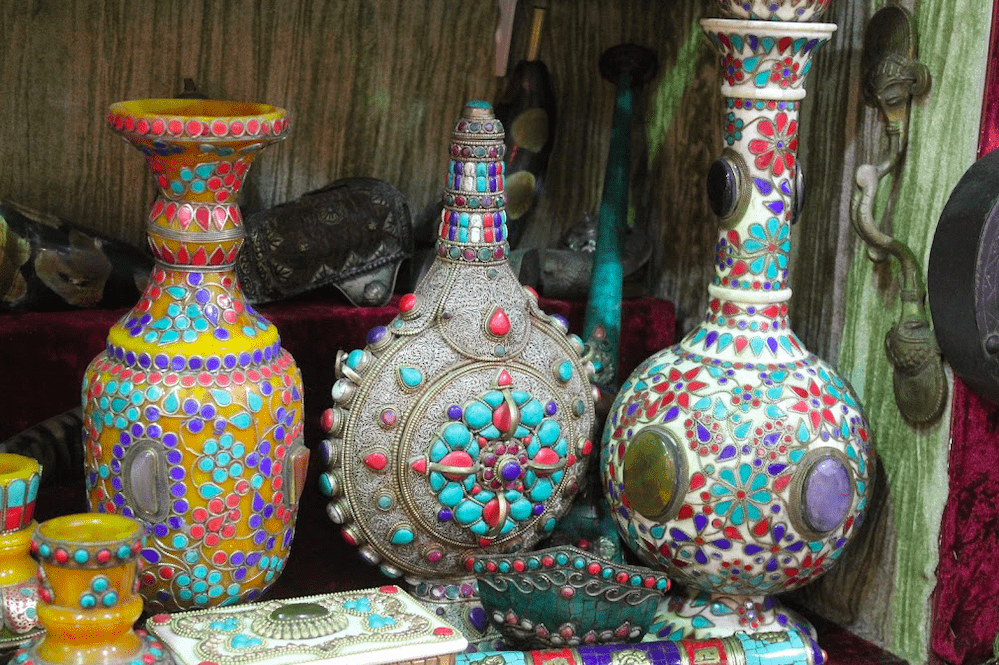
Strategically located between the trade routes of India and China, the market was the main source of supply for Omanis about half a century ago. Established as a major point of commerce in a vital shipping port, its geographic importance has clearly sustained the marketplace through the centuries to this day. In earlier times, most goods were imported, in addition to local products like textiles, fruit, vegetables and dates.
The traditional coffeehouse at the souq’s entrance is a rare relic from the past and a locals-only meeting point for elderly men. Take care not to wander into the historic Shiite district of Al Lawataya by mistake, as the settlement is walled to protect the privacy of the residents here. A sign under the archway requests that visitors keep out.
Navigating the souq takes a bit of practice. You enter by going slightly uphill away from the sea. If you keep turning right at each junction, you will of course come back to the sea. If in doubt, head downhill. That said, getting lost inside the souq is part of the fun. A right fork at the first junction and a left at Muscat Pharmacy should lead you to an Aladdin’s Cave of a bead shop, but then again…
Before the discovery of oil, Muttrah was the center of commerce in Oman (Muscat). It is still a center of commerce as one of the largest sea ports of the region is located there. Other landmarks include Souq Muttrah, a traditional bazaar and Sour Al-Lawatiah, a small community of houses surrounded by an old wall. To the south lies Muscat District.
In the past, the market was built from mud and palm leaves, which suit the high temperatures and the hard climate conditions and hence were the best available materials to build the market at that time. Today, the Muscat Municipality has renovated and decorated the market to maintain the popular style but has also introduced modern amenities and redecorated the market heavily to attract tourists and make the shopping experience comfortable for tourists as well as other ordinary shoppers.
The market becomes more crowded and active during Eid seasons when Omanis come from all over the country to buy garments and jewelry.[4]
You cannot see Mutrah Souq from the outside, as it stretched deep within the city. The market starts at a gate facing the Sea of Oman and Mutrah Corniche, and ends with another gate in the city’s old quarters that usually receive the majority of visitors coming from other Omani towns and villages.
Mutrah Souq is a prototype of old Eastern markets, characterised by narrow winding alleys roofed with wood. The souk can be somewhat deceptive at first: it’s a lot larger, and a lot more confusing, than you might initially suspect. Heading in from the main entrance on the corniche it’s possible to walk across the souk in under five minutes, following the main thoroughfare which bisects the area from north to south
The Souq is a shoppers’ delight offering anything from wallets for RO1 to antique khanjars for RO 1,000. Frankincense, silverware, antiques and garments are most sought after items.The Souq retains much of its old world charm with row upon row of matchbox size shops, set in winding tiny lanes under a palm-frond canopied roof. Here, Bedouin women in traditional dress sell the fragrant aromas known as “Bukhoor,” combining various raw materials such as sandalwood, frankincense and natural oils. You can purchase souvenirs like Khanjars and coffee pots, Bedouin jewellery, clothing (dishdashas, kummas (caps), massar (turban) and khanjar for the men; dishdashas, surwal (trousers), lihaff (shawl) for the women).
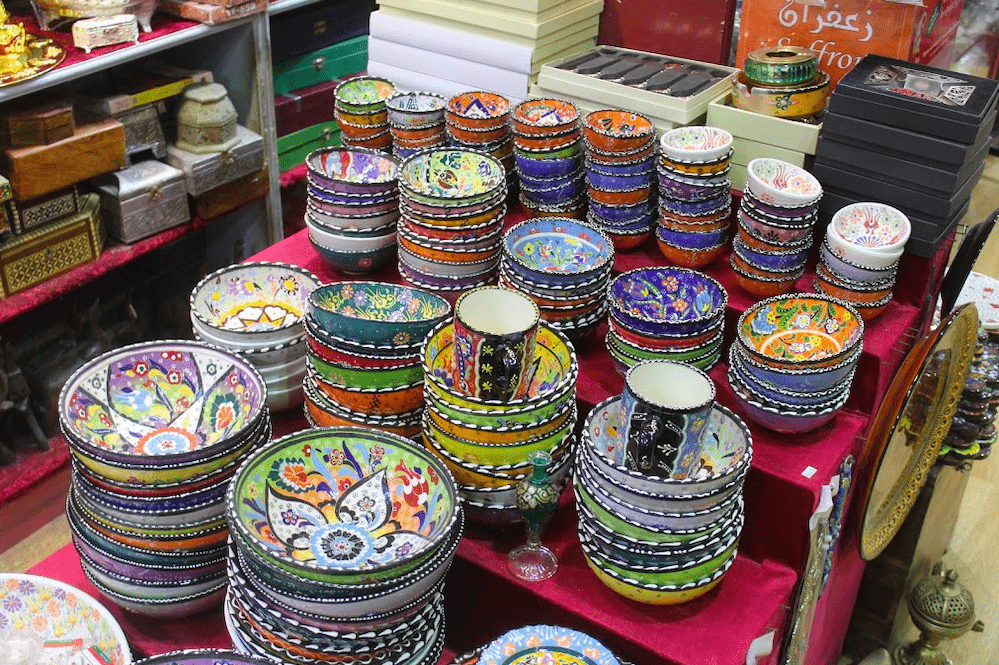
Like so many Arabian bazaars, the Muttrah Souq is a vibrant and bustling collection of colorful stalls filled with textile and spice dealers. Established as a major point of commerce in a vital shipping port, its geographic importance has clearly sustained the marketplace through the centuries to this day.
Whiffs of history continue to waft in the corridors of the picturesque Muttrah Souq, beckoning even old timers to come and relive its vibrant richness
Although the shops retain the same flavours and the wide products are mainly designed to cater to tourists, the Souq is a constant fixture in the itinerary of travellers as well as residents who keep making a date with this popular Corniche destination.
With little coffee shops and eateries dotting this striking Corniche area, it is a perfect weekend (and even weekday) spot with its share of beach, park, fort, museums and even unending series of shopping within and outside the Souq. It is the palpable bygone spirit of the Souq that draws locals, expatriates and tourists to this striking destination.
Parking is almost always a difficult proposition around the busy marketplace and it’s a better to come here by taxi or park at some distance and walk it down.
Visit the Muttrah souk just once, and you’ll never be the same for the rest of your life.
(For over four decades, David Solomon’s insightful stories about people, places, animals –in fact almost anything and everything in India and abroad – as a journalist and traveller, continue to engross, thrill and delight people like sparkling wine. Photography is his passion.)

